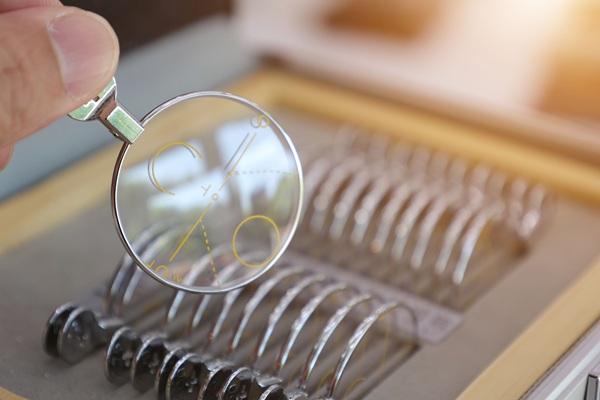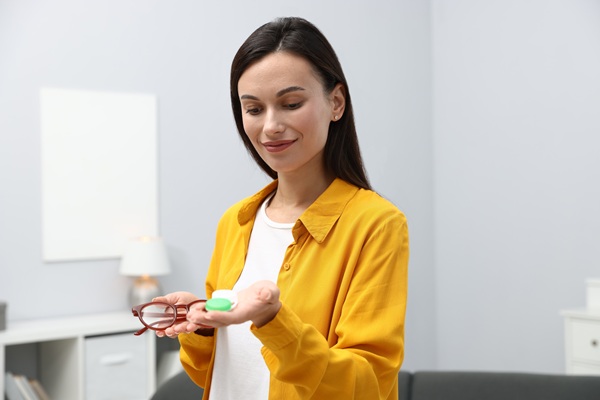Finding the Right Style and Comfort of Eyeglasses for Your Needs

Eyeglasses are a significant investment, and finding the right balance between style and functionality will make all the difference in your daily wear experience. Visiting an optometrist’s office gives you access to expert advice and guidance. However, it helps to know what factors make a pair of eyeglasses suited to your personal style preferences, lifestyle, visual needs, and comfort requirements.
Understanding different frame shapes
Different face shapes are suited to different eyeglass frames. Round frames complement square faces, while rectangular frames are better suited for rounder face shapes because they add definition. Patients with oval faces have the greatest variety of frames to choose from, as most frame shapes complement them.
Examples of popular frame styles include:
- Round
- Rectangle
- Square
- Oval
- Aviator
- Cat-eye
- Browline
Oversized and geometric frames are also options. Both these frame types can complement most face shapes, such as oval, round, heart-shaped, square, and inverted triangle faces. This is because oversized and geometric frames tend to be more about making a bold fashion statement.
Material options for frames
Eyeglass frames are made from various materials, each offering unique advantages. Lightweight plastic frames are known for their versatility and comfort, which makes them an excellent choice for extended wear. They come in vibrant colors, muted shades, and even clear.
Alternatively, durable metal frames provide a sleek, professional appearance and are often preferred for formal settings. Stainless steel and titanium frames are popular choices due to their strength and lightweight design. However, patients with metal allergies may want to opt for hypoallergenic titanium or plastic frames to avoid developing rashes or other reactions.
Exploring frame colors and trends
After frame shape and material, color is the next factor to consider, as it can significantly impact the overall look of the eyeglasses. Neutral tones are considered classic and timeless because they are versatile and match various outfits, social settings, and environments. These include black, brown, and tortoiseshell eyeglasses.
Conversely, bold colors such as red, blue, and vibrant patterns offer an opportunity to express individuality and make a fashion statement. They are also becoming more common and, thus, are considered suitably professional in certain workplaces and schools.
Like anything, trends affect eyeglasses. While it can be fun to get trendy frames, it is important to remember that frames are meant to last one to three years on average. The key to getting the most out of the frames is selecting colors that complement one’s skin tone and personal style preferences — regardless of whether one opts for classic or trendy hues.
Trying eyeglasses on for fit and comfort
An optometrist’s office will have professionals (typically opticians) who fit the frames to the patient’s face. This involves marking down how far the pupils are (pupillary distance) and other measurements. The lab will then use these measurements to create custom prescription eyeglasses.
A few other factors go into ensuring a comfortable fit. Consider frame width and whether the patient needs a pair with adjustable nose pads. Frames that are too narrow can pinch the temples, while frames that are too big will slide down the nose. Temple length also plays a role in stability, as it prevents the frames from shifting during daily activities. Find frames that rest securely over the ears without pressing against pressure points.
What else to consider: Lenses for different visual needs
Patients should consider the type of prescription lenses they need when choosing frames for their eyeglasses. Single-vision lenses correct vision at one specific distance, making them ideal for general use. While most eyeglass frames can accommodate these lenses, the prescription may be too thick for rimless frames. Something as simple as pupillary distance or the required lens curvature can also rule out certain frames.
Bifocals are another commonly accommodated prescription lens. These eyeglasses feature two distinct zones for near and distance vision correction, with a visible line separating the two prescription strengths. Note that some frames are improperly shaped or too short to accommodate bifocals.
Similarly, progressive lenses offer a seamless transition between multiple focal lengths without the visible lines in traditional bifocals. Finding frames that can accommodate progressive lenses is a bit more difficult because there needs to be enough surface area for the gradual prescription change. Large and square frames tend to be safe options for progressive lenses.
Find your perfect pair of eyeglasses
Our team at Texas Optical can help you choose the best eyeglasses for your style, comfort, and visual needs. We have a diverse selection of frames to choose from. Call us today to schedule an optometrist’s appointment.
Request an appointment here: https://www.texasoptical.net or call Texas Optical at (214) 771-7333 for an appointment in our Dallas office.
Check out what others are saying about our services on Yelp: Read our Yelp reviews.
Recent Posts
Progressive lenses offer clear vision at near, arm's length, and far distances without the visible lines found in bifocals. They provide a smooth change in power from top to bottom, which means the eyes can focus comfortably throughout the day. With the right fit and guidance from an optometrist, progressive lenses help reduce eye strain…
Prescription contacts provide a convenient and effective way to correct vision, offering freedom from glasses. For patients considering this option, understanding the fitting process, proper care, and comfort techniques can help ensure long-term success. A first-time wearer can expect guidance from an optometrist at every step, with adjustments designed to create a safe and comfortable…
Digital screens have become an essential part of modern life, making blue light glasses increasingly popular as a solution for eye strain and long-term visual health. These specialized lenses filter harmful blue light emitted from computers, smartphones, and tablets. As digital usage continues to rise, understanding the benefits of blue light glasses can help promote…
A diabetic eye exam is important for spotting and managing vision problems linked to diabetes. Regular eye exams help prevent issues like diabetic retinopathy, macular edema, and permanent vision loss. Understanding what happens during and after a diabetic eye exam can ease concerns and encourage better eye care for people with diabetes.The main goal of…


